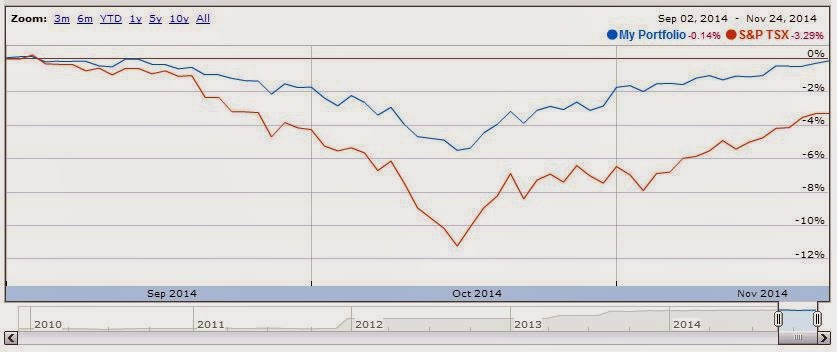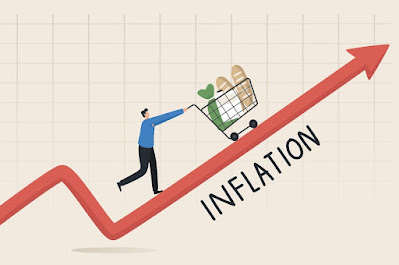Fighting the Urge to Tinker
 |
| Since Labour day, our portfolio has dropped and bounced back |
After the correction in September and October, the TSX has almost returned to when the decline started. In this case, Labour day.
At the time, the TSX was up something like 14% for the year. After the correction, the TSX was only up 3 or 4% for the year. Currently, last I heard, the TSX was up 11% on the year.
So could you imagine the value of my portfolio if I panicked and sold my holdings at the bottom of the correction? I would be down 5% compared to Labour day. If I didn't buy back in right away, I'd be kicking myself since my portfolio went back to par compared to the value of my portfolio on Labour day.
My secret? I don't pay attention to the ups and downs. Frankly, the only reason I look is when I am contributing more money.
Since we continued contributions at regular intervals during the correction, we bought ETFs when prices were depressed. Due to the fact that we purchased more ETFs during the correction, now that prices have increased a bit, our portfolio has benefited from these small gains.
Another consideration is fact that the US ETFs are picking up the slack from the Bond, Canadian, and International ETFs. A couple of months ago, the US ETFs we purchase were hovering around the $29 mark. Currently, they are over $32. The Canadian ETFs are back around the average purchase price and International ETFs are a big negative.
With the US ETFs roaring ahead, the urge for most people is to dump the losers (in this case Canadian and International ETFs) and purchase the winners (the US ETFs).
I can safely report that I have done no such thing. In fact, as the US ETFs went through the roof, I purchased the losers. I did so because I used the money I contributed to the trading account to "rebalance" my portfolio. Thanks to a spreadsheet I whipped up, it helps me determine which ETFs I need to purchase. Usually, small changes don't mean much so "rebalancing" when I contribute means I'm purchasing ETFs in my target percentage allocation. However, when the US ETFs shot up and International ETFs dropped straight down, there was one "rebalancing" session where I only purchased Bond and International ETFs. Thanks to rules I set out for myself and suggested by all the successful passive investors in history, I didn't buy many US ETFs despite the roof shattering prices.
Of course, as I write this, the Canadian ETFs are dropping as the TSX is having a losing day. Apparently, they were up twelve of the past thirteen trading days. That explains the valley in the graph above.
Frankly, I don't know how an active investor does it. How do you know when to buy and sell? Could anyone have predicted the latest winning streak after the correction in October? I know nothing about the markets. The urge to go to the winning side is just too great.
That's why passive investing is right for me. This way there's no urge to play around with my portfolio to get the winners.
The $4.95 commission when selling ETFs is actually another big reason not to tinker.
I'm frugal. I'm keeping that money in my portfolio.


Comments
Post a Comment